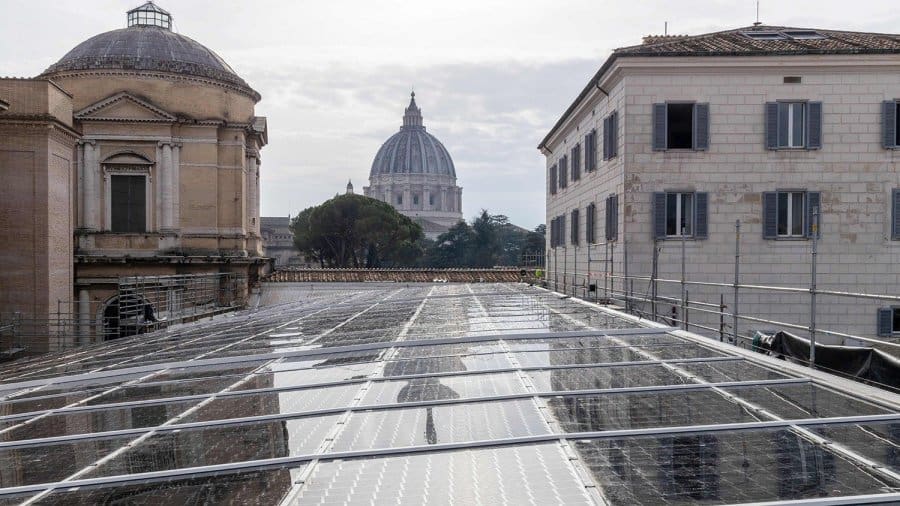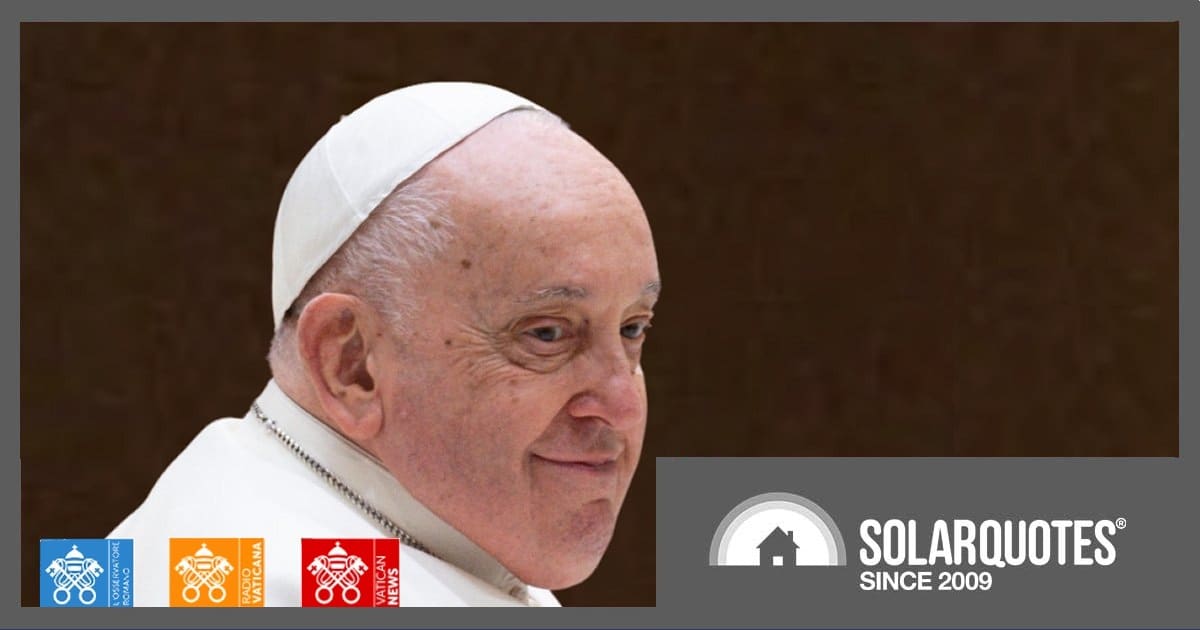Among the decisions Pope Francis will be remembered for is his as-yet unrealised vision of powering Vatican City entirely with solar energy.
Pope Francis (Jorge Mario Bergoglio) died on Monday, April 21, 2025, at the age of 88 at his residence in the Vatican’s Casa Santa Marta.
Jorge Bergoglio was elected pope in March 2013 following the resignation of Pope Benedict XVI one month earlier. He was the first pope to choose Francis as his papal name, after St. Francis of Assisi. St. Francis is known as the patron saint of the poor, but also of the environment and animals.
In his encyclical letter of 2015 titled Laudato Si’ (Praise Be), Pope Francis said there was urgent need for developing renewable energy sources to help address the climate crisis.
“We know that technology based on the use of highly polluting fossil fuels – especially coal, but also oil and, to a lesser degree, gas – needs to be progressively replaced without delay,” he stated.
Pope Francis wanted “a new dialogue about how we are shaping the future of our planet”.
One of the ways to effect positive change is leading by example – practicing what you preach; something the Catholic Church has historically found challenging.
How Is Vatican City Powered?
Vatican City, the headquarters of the Roman Catholic Church, became independent from Italy in 1929. Occupying an area of 49 hectares and with a population of approximately 882 as at last year, it’s the smallest sovereign state in the world on both fronts.
Vatican City relies on electricity imported from Italy. According to Ember Energy, Italy’s electricity mix in 2024:
- fossil fuels: 51%
- hydro: 19%
- wind and solar power: 22%
… and some bioenergy thrown in. It’s a good effort, with more to come – the country is aiming for 69% renewable electricity by 2030.
In 2020, Pope Francis announced Vatican City State was committed to reducing net emissions to zero before 2050.
In a submission to the UNFCC in May 2023, the Vatican stated:
“Although the Vatican City State contributes to global emissions in an insignificant way, it considers it essential to invest in quality emission reduction projects as well as in integral ecology education initiatives, which, in addition to the mitigation of greenhouse gases, also lead to ethical and social benefits.”
“Brother Sun” Vision For Vatican City
Pope Francis also wanted to change how Vatican City was powered. In his apostolic letter of June last year titled “Fratello Sole” (“Brother Sun”), he again urged changes to lifestyles, production and consumption to counteract global warming, and again pointed to fossil fuels as one of its main causes.
“Mankind has the technological means to deal with this environmental transformation and its pernicious ethical, social, economic and political consequences, and, among these, solar energy plays a key role,” stated Pope Francis.
In that letter, Pope Francis assigned the President of the Governorate of Vatican City State and President of the Administration of the Patrimony of the Apostolic See the task of overseeing development of an agrivoltaic1 plant located within the extraterritorial zone of Santa Maria di Galeria. The solar farm would not only power the Vatican’s radio station situated there, but also the Vatican City State in its entirety.
While Pope Francis didn’t get to see his vision fulfilled, there are already solar panel installations within Vatican City itself. One of those systems is atop the Vatican Museum’s “Courtyard of the Corazze” entrance, which was completed in December last year. The 135kW solar power system is expected to generate approximately 164 MWh of clean electricity per year. Covering the area with solar panels will also provide a significant reduction in summer cooling energy consumption.

Image: Musei Vaticani
Various other energy efficiency related efforts have been carried out or are underway in Vatican City; including LED lighting retrofits, the addition of battery systems and HVAC system upgrades. The Vatican has also committed to decarbonising its vehicle fleet by 2030.
Whether Pope Francis’s solar energy plan for Vatican City via Santa Maria di Galeria is realised remains to be seen. Among the hurdles, Italy banned the construction of solar farms on productive agricultural land last year. While the agrivoltaics angle combined with Catholic Church clout could help get it over the line, there are other ways to run the city-state entirely on renewables right now – such as power purchase agreements with existing large-scale wind and solar power facilities.
Footnotes
- “Agrivoltaics” combines solar electricity production with agriculture on the same land. ↩


 RSS - Posts
RSS - Posts



Speak Your Mind